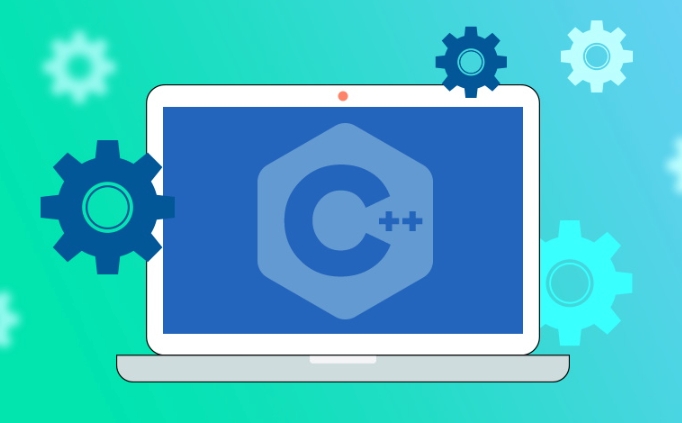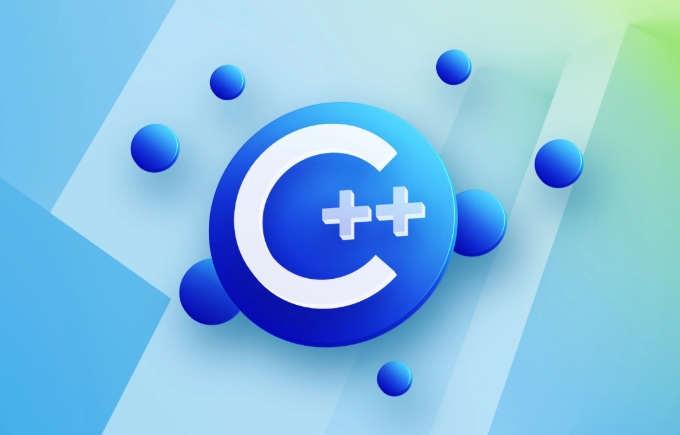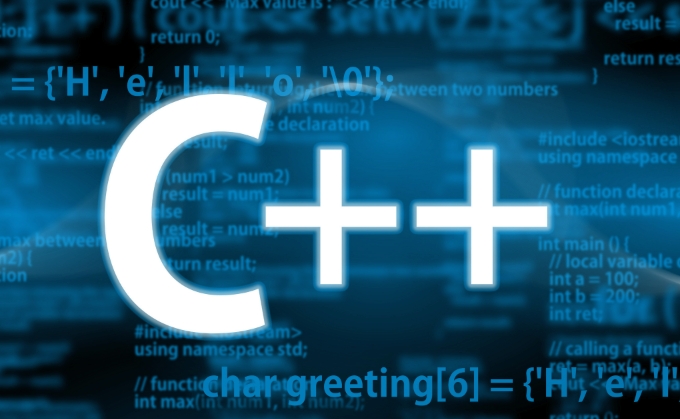The SOLID principle is five core principles used in object-oriented programming to improve the maintainability and extensibility of software design. ① The single responsibility principle (SRP) requires a class to be responsible for only one task to avoid multifunctional coupling; ② The opening and closing principle (OCP) emphasizes opening and closing of extensions and closing modifications, and implementing behavior expansion through inheritance and polymorphism; ③ The Richter replacement principle (LSP) ensures that subclasses can transparently replace parent classes without changing program accuracy; ④ The interface isolation principle (ISP) advocates defining fine-grained interfaces to avoid unnecessary dependencies; ⑤ The dependency inversion principle (DIP) advocates relying on abstraction rather than concrete implementation, reducing the coupling between modules. These principles can be effectively implemented in C through abstract classes, interface design, dependency injection, etc.

SOLID principles are a set of five design principles intended to make software designs more understandable, flexible, and maintainable. These principles were introduced by Robert C. Martin (Uncle Bob) and are widely used in object-oriented programming, including C . Understanding and applying these principles can help you write better, cleaner, and more scalable C code.

Single Responsibility Principle (SRP)
This principle states that a class should have only one reason to change , meaning it should have only one job or responsibility.

In practice, this means you shouldn't cram multiple functions into a single class. For example, if you have a class that reads data from a file, processes it, and logs the result, it's violating SRP. Each of those tasks could be split into separate classes.
How to apply it in C:

- Split large classes into smaller ones with focused responsibility.
- Use helper classes for things like logging, serialization, or input/output.
Example: instead of having a
ReportGeneratorthat also writes files, create aFileWriterclass to handle saving files separately.
Open/Closed Principle (OCP)
The idea here is that software entities (classes, functions, modules) should be open for extension but closed for modification .
This means that instead of changing existing code every time you need something new, you should structure your code so that you can add behavior without modifying existing logic.
How to do this in C:
- Use inheritance and polymorphism to allow extension.
- Define interfaces or abstract base classes for common operations.
Example: If you have a shape-drawing system, instead of adding a new condition for each shape type, define a
Shapebase class with a virtualdraw()method. Then deriveCircle,Square, etc., from it.
Liskov Substitution Principle (LSP)
This principle says that objects of a superclass should be replaced with objects of a subclass without breaking the application .
In simpler terms, derived classes should behave correctly when used in place of their base class.
What to watch out for in C:
- Avoid overriding methods in a way that changes expected behavior.
- Don't throw unexpected exceptions in derived classes.
- Be careful with preconditions/postconditions — they shouldn't get stricter in subclasses.
Example: If you have a
Rectangleclass withsetWidth()andsetHeight(), creating aSquareclass that inherits from it and overrides both setters to keep width and height equal might violate LSP, because usingSquarewhereRectangleis expected could produce incorrect results.
Interface Segregation Principle (ISP)
This one suggests that clients should not be forced to depend on interfaces they don't use .
Instead of having one large interface with many methods, it's better to break it into smaller, more specific interfaces.
Applying ISP in C:
- Create small, focused abstract classes (interfaces).
- Let classes inherit only what they actually need.
Example: If you're building a game with different types of players (like human and AI), don't put all possible actions in one interface. Instead, split into
IPlayer,IAIController, etc., depending on what each type needs.
Dependency Inversion Principle (DIP)
This principle has two parts:
- High-level modules should not depend on low-level modules. Both should depend on abstractions.
- Abstractions should not depend on details. Details should depend on abstractions.
It's about reducing tight coupling between components.
How to implement DIP in C:
- Program against interfaces or abstract classes.
- Use dependency injection to pass dependencies rather than hard-coding them.
Example: instead of having a
DatabaseLoggerdirectly inside a service class, pass an interface likeILoggerinto the constructor. That way, you can switch logging implementations easily.
So while C doesn't enforce SOLID principles directly, following them leads to better architecture and easier maintenance. It's not always straightforward, especially in complex systems, but even partial adoption can make a big difference.
Basically that's it.
The above is the detailed content of What are SOLID principles in C ?. For more information, please follow other related articles on the PHP Chinese website!

Hot AI Tools

Undress AI Tool
Undress images for free

Undresser.AI Undress
AI-powered app for creating realistic nude photos

AI Clothes Remover
Online AI tool for removing clothes from photos.

Clothoff.io
AI clothes remover

Video Face Swap
Swap faces in any video effortlessly with our completely free AI face swap tool!

Hot Article

Hot Tools

Notepad++7.3.1
Easy-to-use and free code editor

SublimeText3 Chinese version
Chinese version, very easy to use

Zend Studio 13.0.1
Powerful PHP integrated development environment

Dreamweaver CS6
Visual web development tools

SublimeText3 Mac version
God-level code editing software (SublimeText3)

Hot Topics
 The difference between programming in Java and other languages ??Analysis of the advantages of cross-platform features of Java
May 20, 2025 pm 08:21 PM
The difference between programming in Java and other languages ??Analysis of the advantages of cross-platform features of Java
May 20, 2025 pm 08:21 PM
The main difference between Java and other programming languages ??is its cross-platform feature of "writing at once, running everywhere". 1. The syntax of Java is close to C, but it removes pointer operations that are prone to errors, making it suitable for large enterprise applications. 2. Compared with Python, Java has more advantages in performance and large-scale data processing. The cross-platform advantage of Java stems from the Java virtual machine (JVM), which can run the same bytecode on different platforms, simplifying development and deployment, but be careful to avoid using platform-specific APIs to maintain cross-platformity.
 How to reduce the use of global variables in C?
May 23, 2025 pm 09:03 PM
How to reduce the use of global variables in C?
May 23, 2025 pm 09:03 PM
Reducing the use of global variables in C can be achieved by: 1. Using encapsulation and singleton patterns to hide data and limit instances; 2. Using dependency injection to pass dependencies; 3. Using local static variables to replace global shared data; 4. Reduce the dependence of global variables through namespace and modular organization of code.
 c: What does it mean? Data bit c Median domain definition colon usage
May 23, 2025 pm 08:48 PM
c: What does it mean? Data bit c Median domain definition colon usage
May 23, 2025 pm 08:48 PM
In C, the bit field is a structure member that specifies the number of bits, used to save memory and directly manipulate hardware. Example: structMyStruct{inta:2;intb:5;intc:1;}. The advantage of bit domains is memory savings, but there are cross-platform issues, access restrictions and assignments that require caution. Example of usage: structStateMachine{unsignedintpower:1;unsignedintmode:2;unsignedinterror:1;}. Performance recommendations include arranging bit fields by size, avoiding overuse and adequate testing.
 Usage of ? in c Analysis of three-item operator instance in c
May 23, 2025 pm 09:09 PM
Usage of ? in c Analysis of three-item operator instance in c
May 23, 2025 pm 09:09 PM
The syntax of the trigonometric operator in C is condition?expression1:expression2, which is used to select and execute different expressions according to the condition. 1) Basic usage example: intmax=(x>y)?x:y, used to select the larger value in x and y. 2) Example of nested usage: intresult=(a>0&&b>0)?a b:(a==0||b==0)?a*b:a-b, used to perform different operations according to different conditions. 3) Error handling example: std::stringerrorMessage=(errorCode==0)?"Successful&quo
 Usage of c Typical application scenarios of logical non-operators
May 23, 2025 pm 08:42 PM
Usage of c Typical application scenarios of logical non-operators
May 23, 2025 pm 08:42 PM
The usage of logical non-operator! in C includes: 1) Basic usage: inverse the Boolean value; 2) Conditional judgment: simplify the code, such as checking whether the container is empty; 3) Loop control: processing elements that do not meet the conditions; 4) Function return value processing: determine whether the operation has failed. Pay attention to potential pitfalls such as pointer processing and operator priority when using!, but it can help write more concise and efficient code.
 How to use the image rotation function of Debian cxImage
May 16, 2025 pm 08:57 PM
How to use the image rotation function of Debian cxImage
May 16, 2025 pm 08:57 PM
In the Debian system, you can follow the following steps: Installing the cxImage library First, make sure you have installed the cxImage library. If it has not been installed, you can install it through the following command: sudoapt-getupdatesudoapt-getinstalllibcximage-dev Write the code Next, write a simple C program to show how to use the cxImage library for image rotation. Here is a sample code: #include#includein
 What is the use of python multi-domain application
May 21, 2025 pm 09:51 PM
What is the use of python multi-domain application
May 21, 2025 pm 09:51 PM
Python is widely used in data science, web development, automation, finance, scientific computing and other fields. 1) Data Science: Use NumPy, Pandas, TensorFlow and other libraries to process data and build models. 2) Web development: Django and Flask frameworks quickly build websites. 3) Automation: Write scripts to automate tasks. 4) Finance: Quantopian and Zipline are used for quantitative transactions. 5) Scientific Computing: SciPy and Matplotlib are used for data analysis and visualization. Python's simplicity and readability make it ideal for multiple fields.
 How to implement the logging system in C?
May 23, 2025 pm 09:18 PM
How to implement the logging system in C?
May 23, 2025 pm 09:18 PM
Implementing an efficient and flexible logging system in C can use the following steps: 1. Define log classes and process log information at different levels; 2. Use policy mode to achieve multi-objective output; 3. Ensure thread safety through mutex locks; 4. Use lock-free queues for performance optimization. This can build a log system that meets the needs of actual application.






